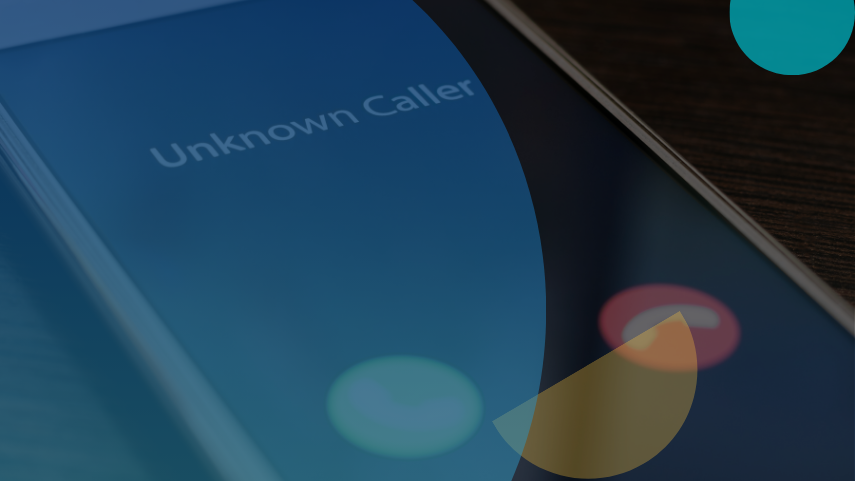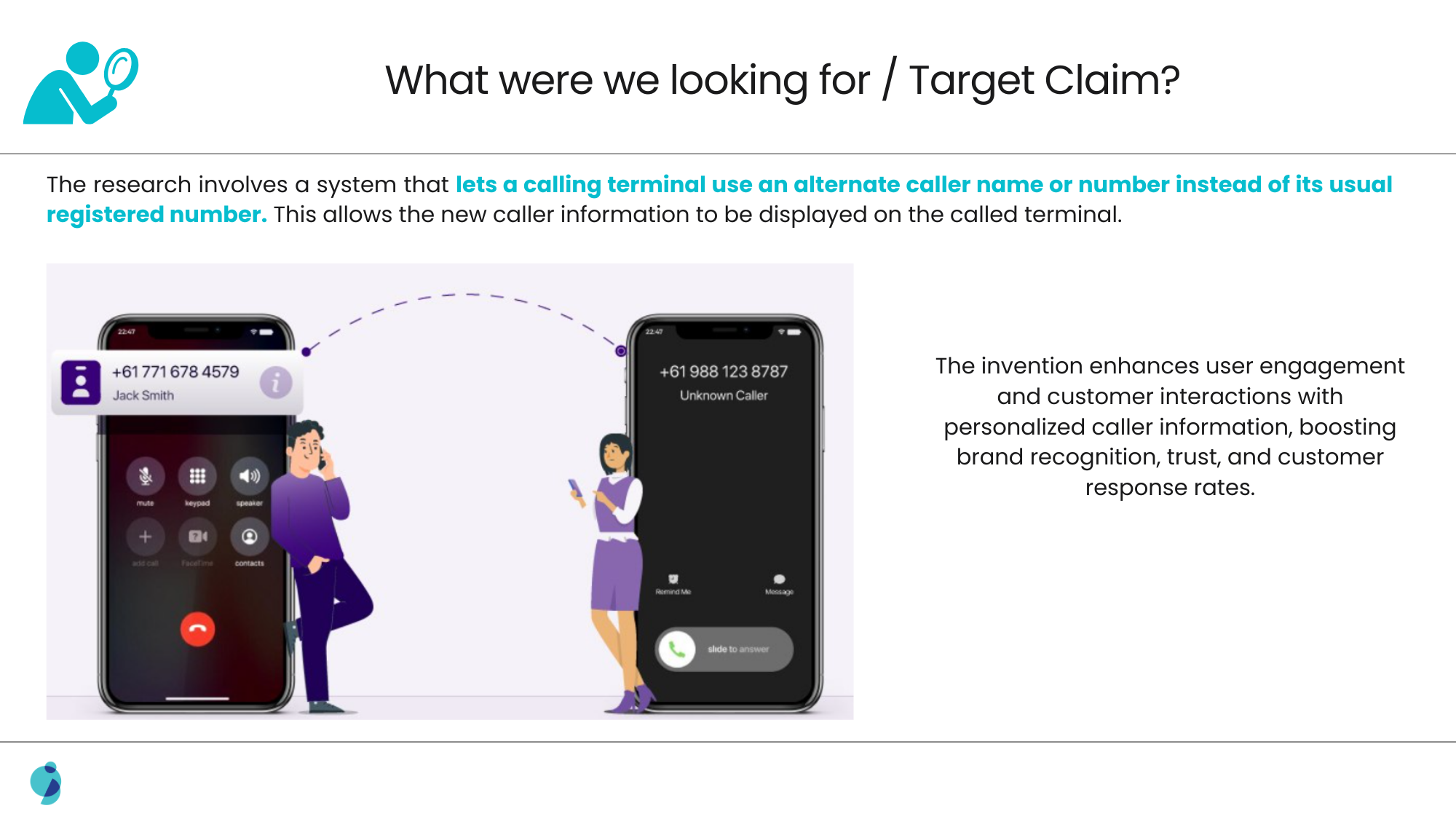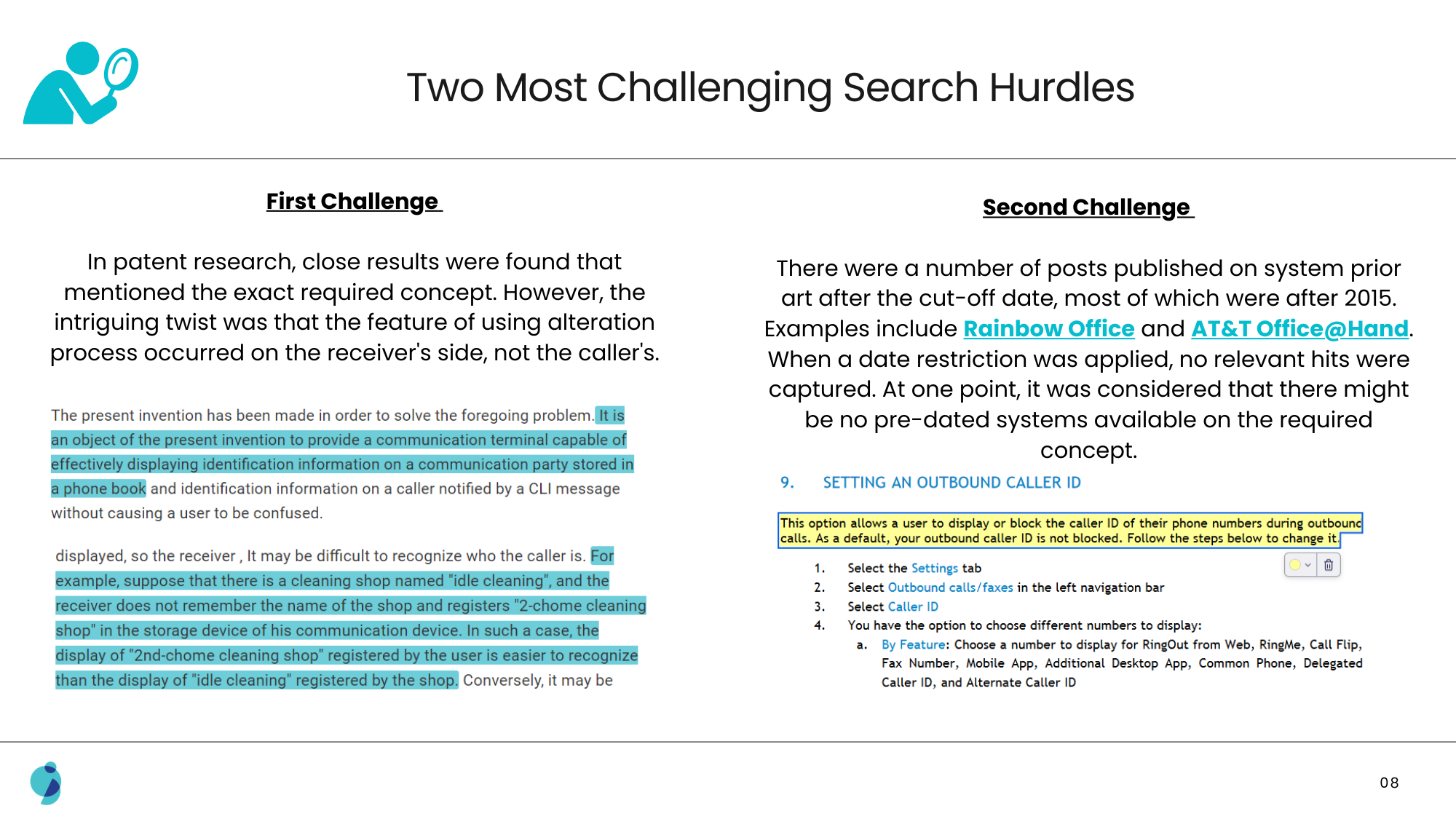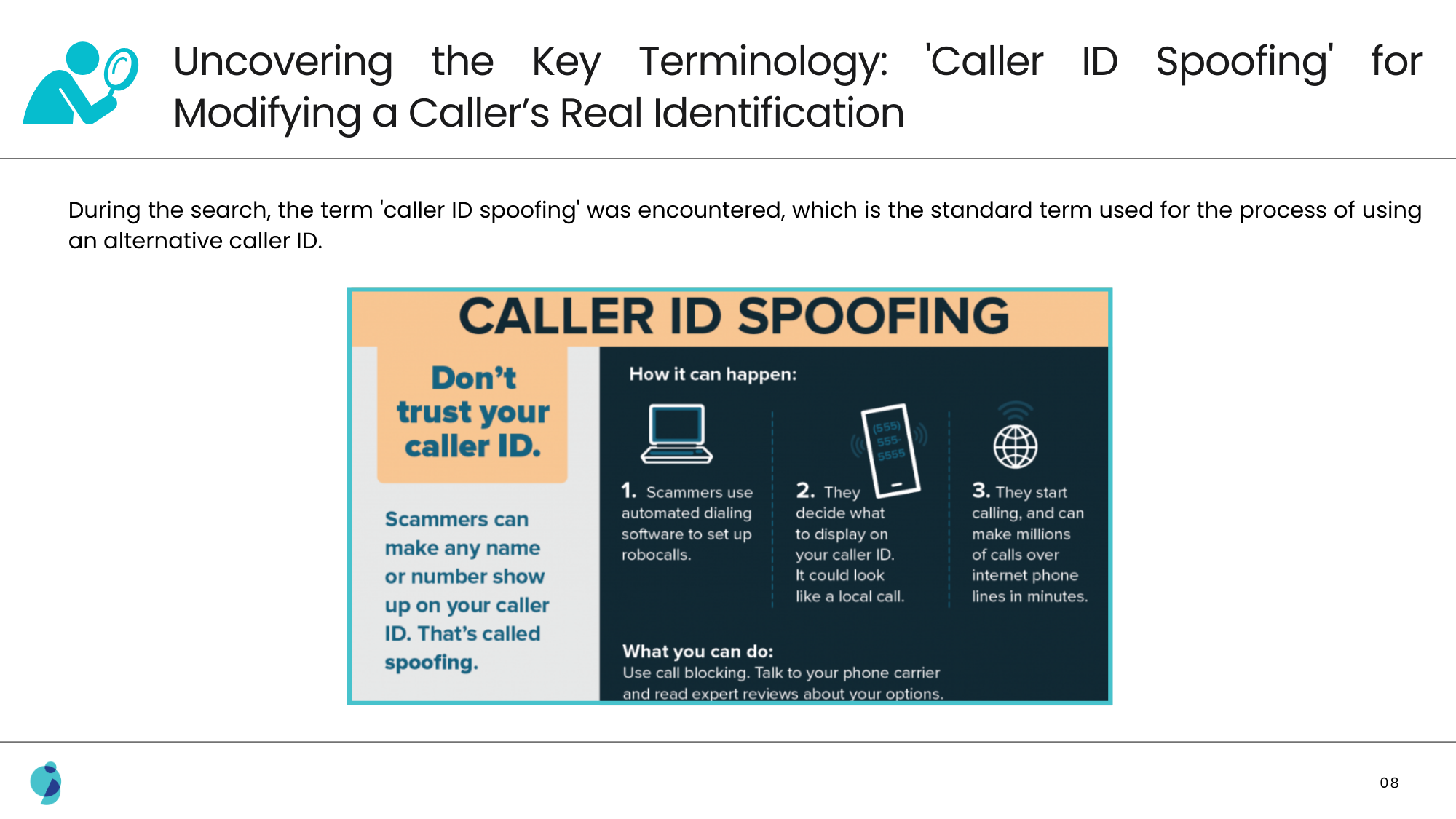
Value Delivered
Thorough research by GreyB’s patent invalidity team uncovered valuable prior art that strengthened the client’s patent position. With a comprehensive understanding of their standing, the client confidently prepared a strong defense against potential infringement lawsuits.
Problems Solved
In this project, the client was concerned about facing a potential patent infringement lawsuit on their marketed product. The client started a prior art search to assess the strength of their patent. Various challenges came up during the search. Some results closely matched the concept, but the key element—the alteration process—was often applied to the receiver’s side rather than the caller’s. This made it harder to find direct evidence to support the client’s case.
Many relevant prior art references were found, including notable examples like Rainbow Office and AT&T Office@Hand. However, they were dated after the cut-off date of August 30, 2004. When the research was focused on pre-dated systems, no relevant results appeared, raising concerns that systems addressing the concept might not exist before the cut-off.



Solution Offered
During the search, the term “caller ID spoofing” led to multiple publications from Kevin Poulsen, a well-known figure in cybersecurity. One of these was an earlier blog that referenced a website called Star 38, which was launched on September 1, 2004. The website provided caller spoofing features. Initial research on Star 38 yielded no relevant information before the cut-off date. However, a deeper investigation using the Web Archive revealed the necessary prior art dated August 4, 2004. This content explained a system that allowed the caller to input a 10-digit alternative number to display on the recipient’s device.
Get the full case study to discover how GreyB successfully invalidated a patent on different Caller ID using system prior art.









